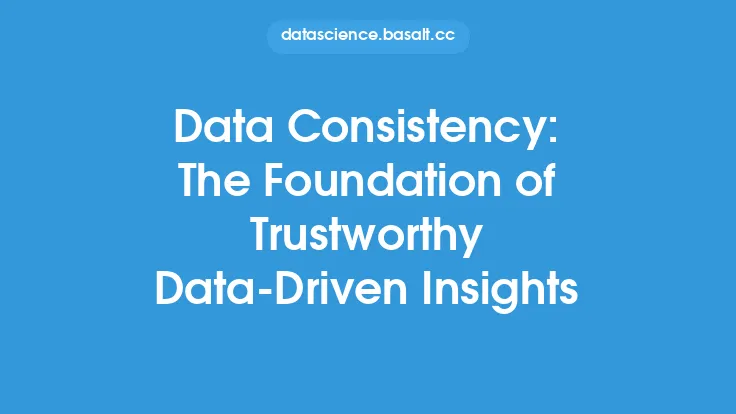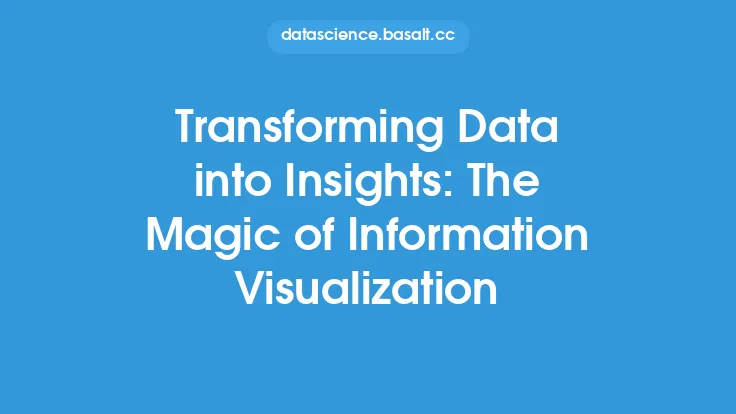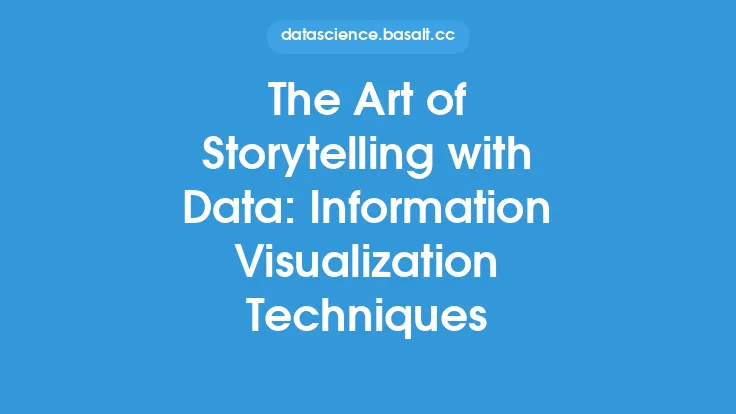Data transformation is a critical process in data mining that involves converting raw data into a format that can be easily analyzed and interpreted. This process is essential in extracting valuable insights from data, which can inform business decisions, improve operations, and drive growth. At its core, data transformation involves a series of steps that prepare data for analysis, including data cleaning, data normalization, data aggregation, and data feature engineering.
Introduction to Data Transformation Techniques
There are several data transformation techniques that can be applied to different types of data, depending on the specific requirements of the project. These techniques include data aggregation, data normalization, data feature scaling, and data encoding. Data aggregation involves combining multiple data points into a single value, such as calculating the mean or median of a dataset. Data normalization involves scaling numeric data to a common range, usually between 0 and 1, to prevent differences in scales from affecting the analysis. Data feature scaling involves transforming data to have zero mean and unit variance, which can improve the performance of machine learning algorithms. Data encoding involves converting categorical data into numeric data, which can be used in machine learning algorithms.
Data Transformation Tools and Technologies
There are several data transformation tools and technologies available, including programming languages like Python and R, data transformation libraries like Pandas and NumPy, and data integration platforms like Apache Beam and Apache NiFi. These tools and technologies provide a range of features and functionalities that can be used to transform data, including data cleaning, data normalization, and data aggregation. For example, the Pandas library in Python provides a range of data transformation functions, including data merging, data pivoting, and data reshaping. The Apache Beam platform provides a unified programming model for both batch and streaming data processing, which can be used to transform large datasets.
Data Transformation Best Practices
There are several best practices that should be followed when transforming data, including data quality checking, data validation, and data documentation. Data quality checking involves verifying that the data is accurate, complete, and consistent, which can help to prevent errors and inconsistencies in the analysis. Data validation involves checking that the data conforms to the expected format and structure, which can help to prevent errors and inconsistencies in the analysis. Data documentation involves keeping a record of the data transformation process, including the steps taken and the decisions made, which can help to ensure that the process is reproducible and transparent.
Data Transformation Challenges and Limitations
There are several challenges and limitations associated with data transformation, including data quality issues, data complexity, and data scalability. Data quality issues can arise from errors, inconsistencies, and missing values in the data, which can affect the accuracy and reliability of the analysis. Data complexity can arise from the size, structure, and format of the data, which can make it difficult to transform and analyze. Data scalability can arise from the need to process large datasets, which can require significant computational resources and infrastructure. To overcome these challenges and limitations, it is essential to have a deep understanding of the data and the transformation process, as well as the tools and technologies used to support it.
Real-World Applications of Data Transformation
Data transformation has a range of real-world applications, including business intelligence, predictive analytics, and data science. In business intelligence, data transformation is used to extract insights from data that can inform business decisions, such as identifying trends and patterns in customer behavior. In predictive analytics, data transformation is used to build models that can predict future outcomes, such as forecasting sales or predicting customer churn. In data science, data transformation is used to extract insights from data that can inform scientific research, such as identifying patterns and relationships in large datasets.
Future of Data Transformation
The future of data transformation is likely to be shaped by advances in technology, including artificial intelligence, machine learning, and cloud computing. These technologies will provide new tools and techniques for transforming data, such as automated data cleaning and data normalization, which can improve the efficiency and effectiveness of the process. Additionally, the increasing use of big data and IoT devices will require new approaches to data transformation, such as real-time data processing and streaming data analytics. As data continues to play an increasingly important role in business and society, the importance of data transformation will only continue to grow, and it is essential to stay up-to-date with the latest developments and advancements in this field.





